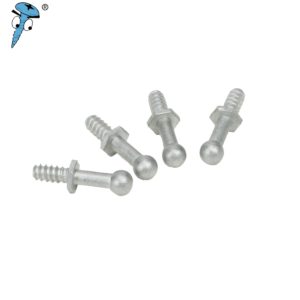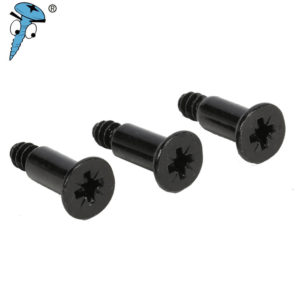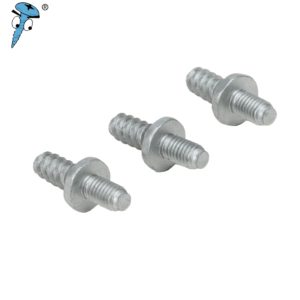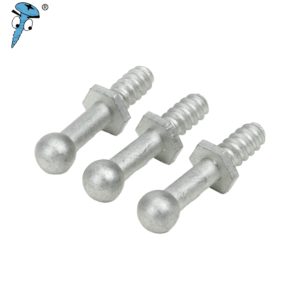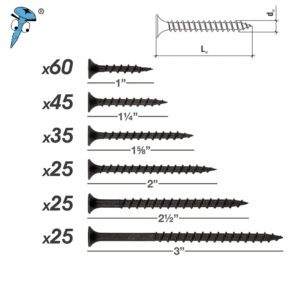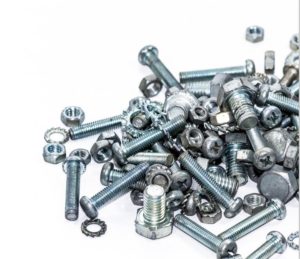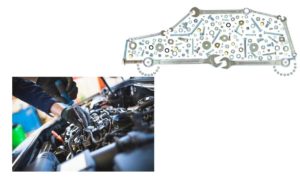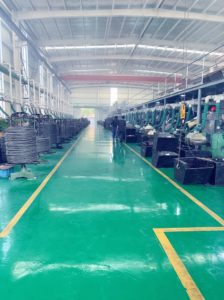Prince Fastener:Fastener production process and crafts– Blank Forming
The fastener production process comprises six major steps: raw material transformation, blank forming, heat treatment, combined locking, surface treatment and packaging selection.
The hot upsetting process in the above process means that the raw materials are stamped after heated. The metal heating is applied to the mass production of special-shaped, large-size, high-strength steel and stainless steel fasteners. Upsetting.
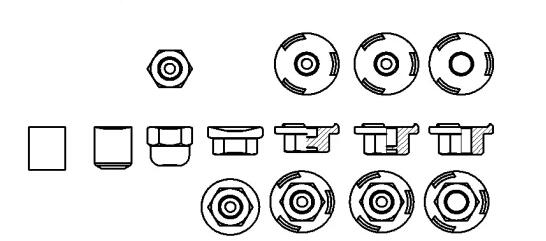
The blank forming is mainly composed of three processes: cold heading, turning and tooth making. The cold heading process is the key process of the entire fastener production process. The cold heading process often obtains the size and appearance of the finished product.
Prince Fastener will introduce the second part of the fastener production process series, explaining the concept and definition of each process of forming blanks by cold heading process in fastener production and introducing the problems and key points that occur in each process. Control items.
01 Cold heading
Cold heading is a metal pressure processing method that uses a press to apply pressure between the upper and lower dies at room temperature to compress the blank in the axial direction and expand in the radial direction.
Follow the basic principles of metal plastic forming. They are usually used to make screws, bolts, rivets and nuts.
Machining can be reduced or replaced.
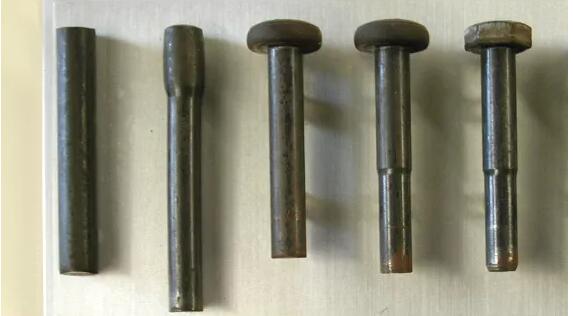
Cold heading saves materials, and the material utilization rate can reach 80 to 90%. It is a processing method with little or no waste.
Cold heading is mostly carried out on a special cold heading machine. The feeding mechanism automatically feeds the bar material to a certain length. The cutting mechanism cuts it into blanks, which are then sent to the accumulation pressing and punching stations by the clamp transmission mechanism for cold heading. It is easy to realize continuous, multi-station and automatic production.
On the cold heading machine, the processes of cutting, heading, accumulating, forming, chamfering, rolling, reducing diameter and trimming can be completed in sequence. High production efficiency, up to 80-250 pieces/min.
The surface roughness and dimensional accuracy of cold heading parts are good. The surface roughness can reach Ra3.2–Ra1.6, which depends on the forming mould’s surface roughness and manufacturing accuracy.
The cold heading includes the basic processes of cutting, shaping, extrusion, upsetting, punching, and trimming. A specific part consists of one or more processes.
The cutting is the first process of the whole cold heading forming process. Other processes can be flexibly arranged according to different parts, but their constraints should be met.
One station of the cold heading machine can also include several processes. Suppose the cold heading machine has enough stations. In that case, generally, one station is selected to correspond to one process, which is conducive to simplifying the mould processing and improving the life of the mould, thereby improving the production stability.
Cold heading equipment: multi-station cold heading machine
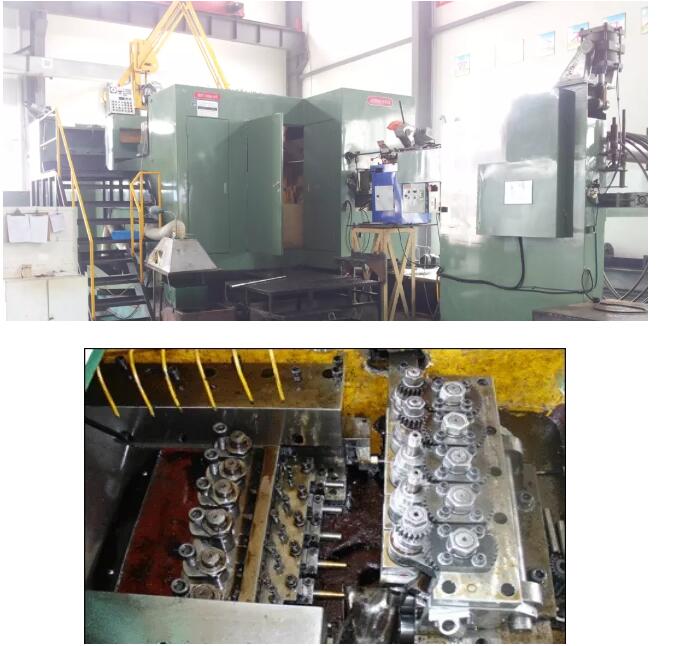
02 Turning
Turning is a kind of machining, which mainly uses turning equipment to turn workpiece blanks to obtain the ideal workpiece appearance.
In turning to machine, since the workpiece is fixed and rotates circumferentially with the machine tool’s spindle, it is generally used for machining the outer and inner circles of the workpiece.
Turning is mainly used for turning the ends of externally threaded parts – cylindrical ends, conical ends and guide end, drilling, milling grooves, etc.
03 Thread forming – thread-making
The formed semi-finished products are processed, rolled and tapped to achieve the desired thread.
It is called rolling teeth for bolts (screws), and nuts are called tapping teeth.
Turning: Use turning tools to process internal and external threads on the machine tool.
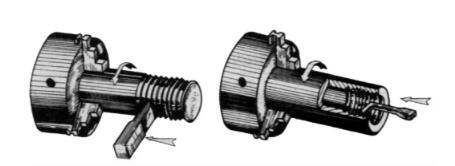
Rolling teeth: It is also called thread rolling. It is to fix a tooth plate, and another movable tooth plate drives the product to move, and the product is plastically deformed by extrusion to form the required thread.
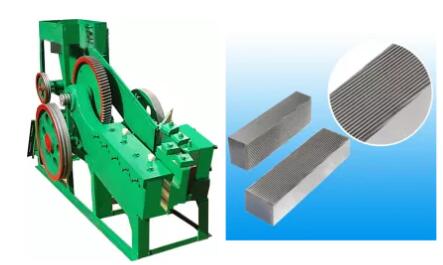
Tapping: It is an internal thread processing method. The formed nut is processed with a tap on a special tapping machine to form the required thread.
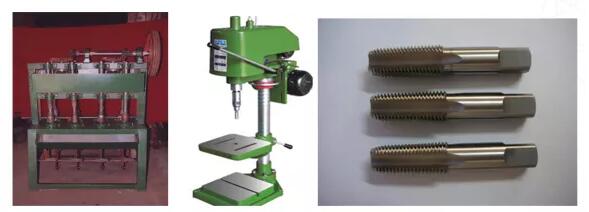
Thread rolling: Using a special thread rolling machine (the thread rolling machine is divided into a two-wheel threading machine and a three-wheel threading machine), with the help of two threading rollers or three threading rollers, the thread is rolled and formed.

04 Comparison of tooth rolling and tooth rolling
Thread rolling and thread rolling are obtained by extruding materials to manufacture external threads. Such as the thread of a bolt.
The thread rolling machine is suitable for bolts with high machining accuracy and large diameter; the production efficiency of the thread rolling machine is much higher than that of the thread rolling machine, but the precision is not high.
The production efficiency of planetary thread rolling is several times or even dozens of times higher than that of the thread rolling machine. Still, it is very difficult to manufacture the curved wire plate, so the precision is relatively low, and it is easy to deform after heat treatment, resulting in the difference between the radius of the arc and the radius of the rolling wheel, which will cause When rolling, one side slides and the other side rotates.
05 Common materials for cold heading
Low carbon steel: At present, commonly used JIS Japanese standard SWRCH6A, SWRCH8A, SWRCH10A, SWRCH22A; SAE American standard 1008, 1010, 1018, 1022; national standard ML10, ML15, ML20
Medium carbon steel: commonly used JIS Japanese standard SWRCH35K, SWRCH40K, SWRCH45K, SAE American standard 1035, 1040, 1045, GB national standard ML35, ML40, ML45.
Alloy steel: Commonly used are JIS Japanese standard SWRCH18A, SWRCH22A, SCR440 SCM435, SCM440; SAE American standard 10B21, 10B33, 10B38, 4135, 4140, 4144; GB national standard ML20MnTiB, ML40Cr, ML42CrMoA, ML35CrMoA.
06 Common defects in thread forming
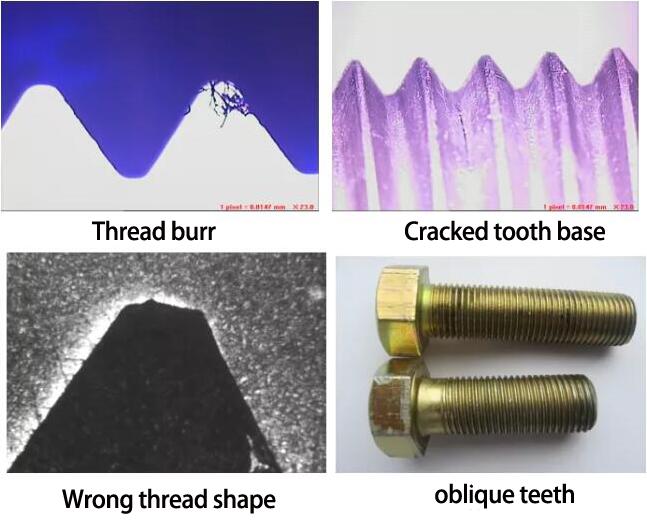
If you have any questions or suggestions, need source files, or have friends who need to communicate in the group, contact Prince Fastener.


